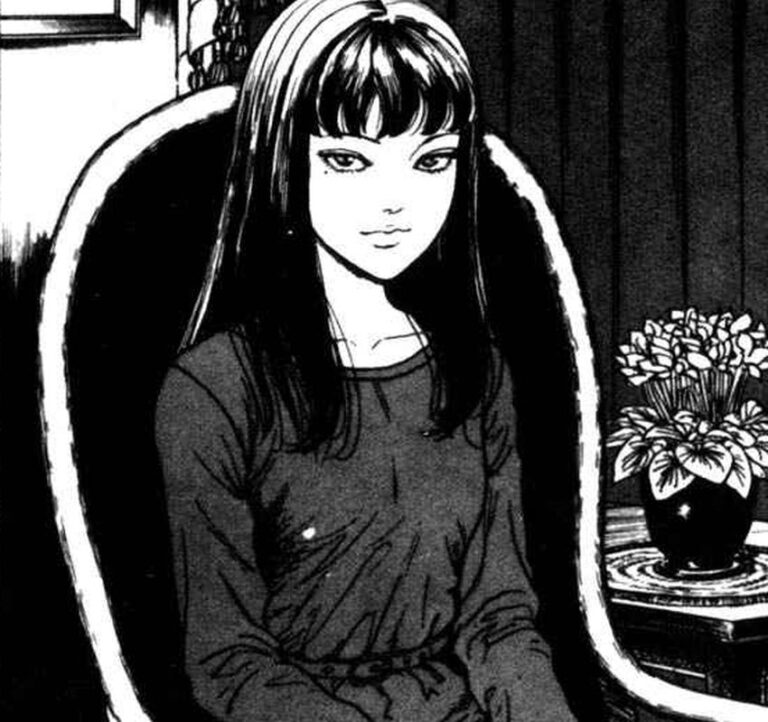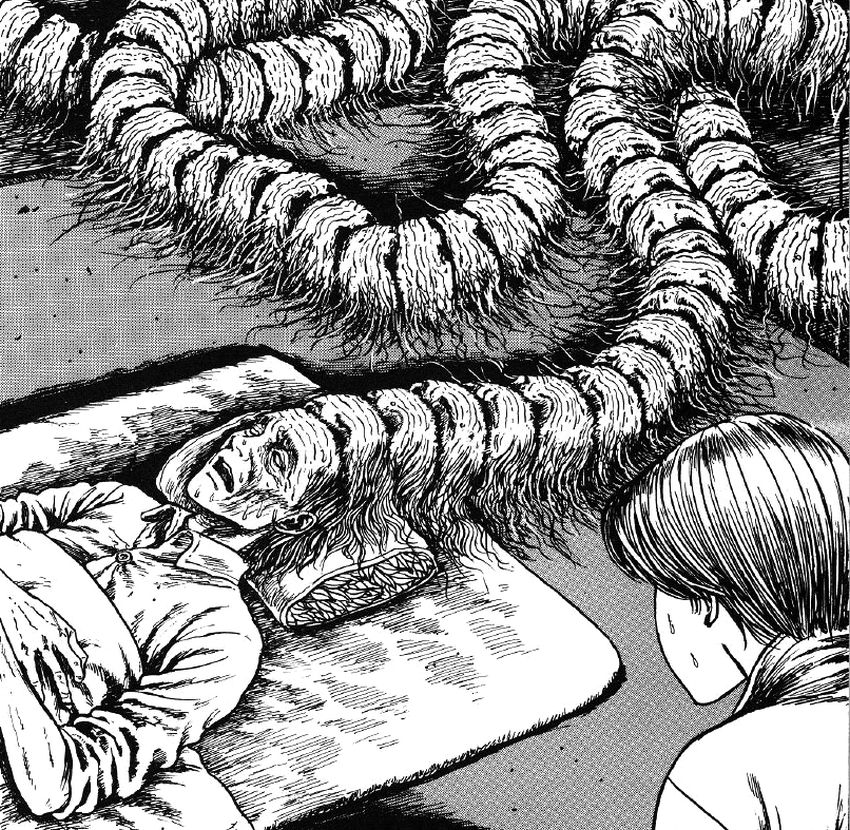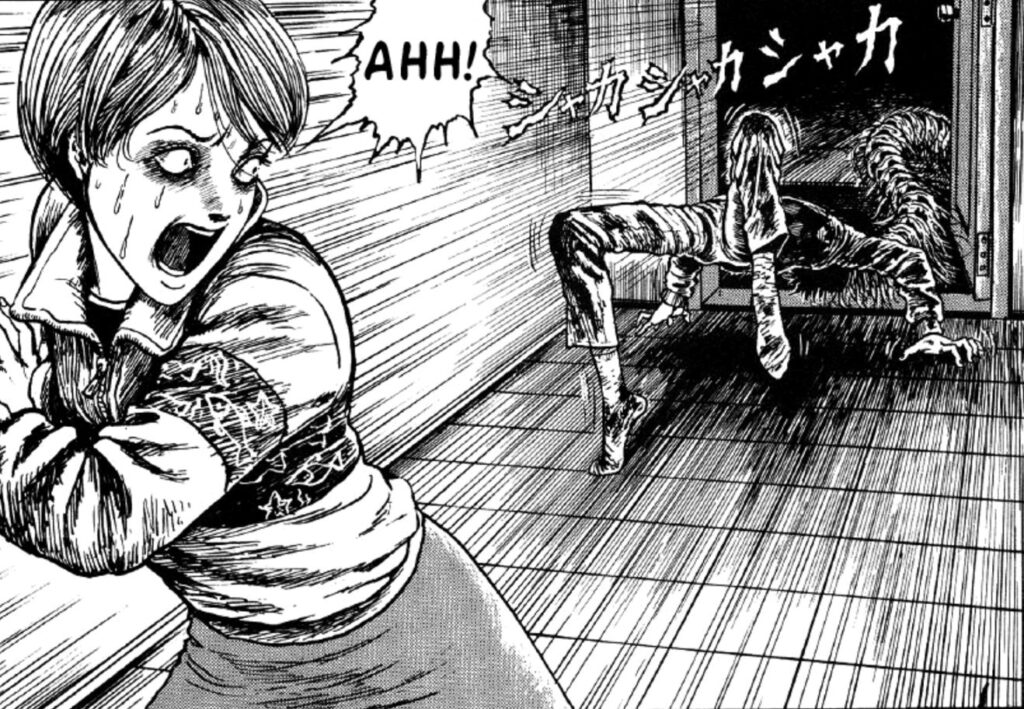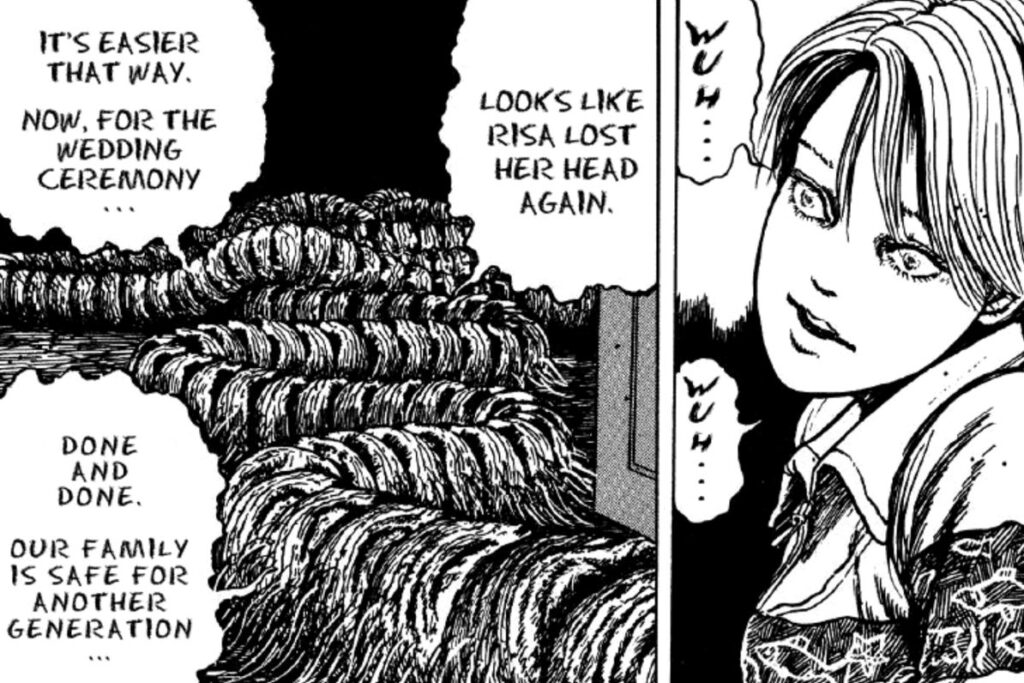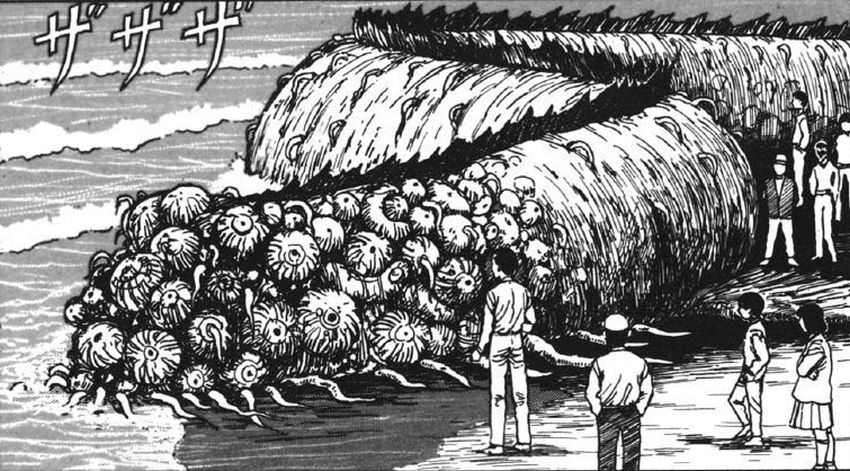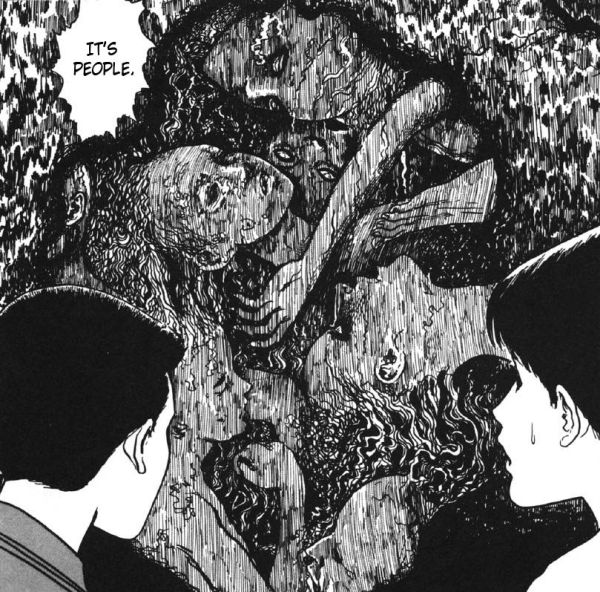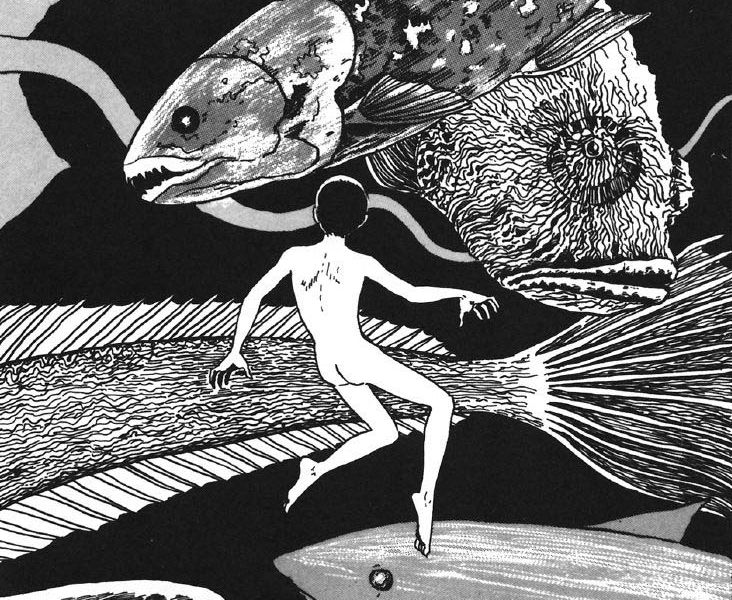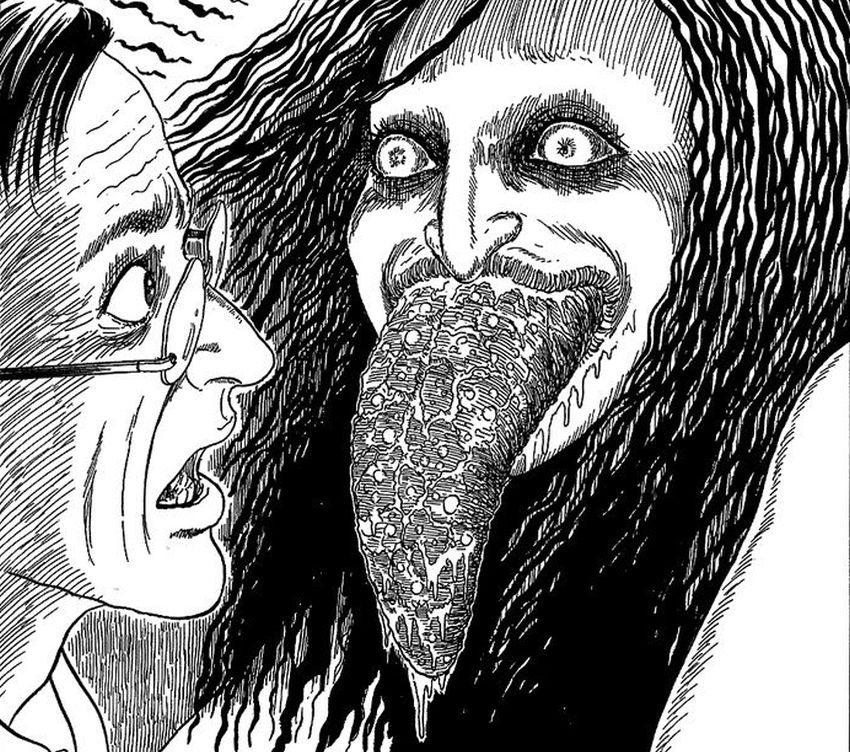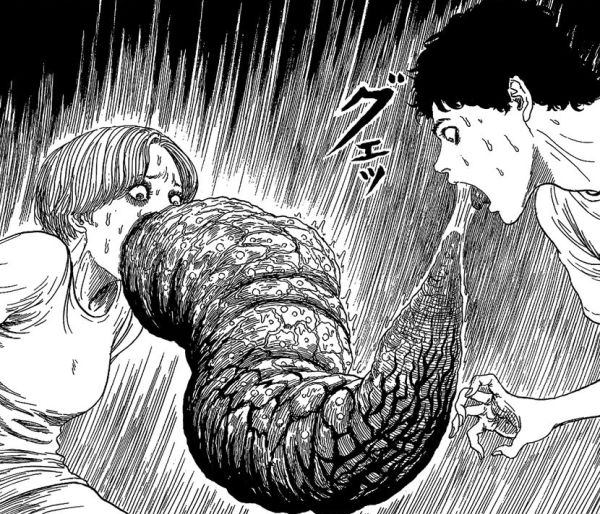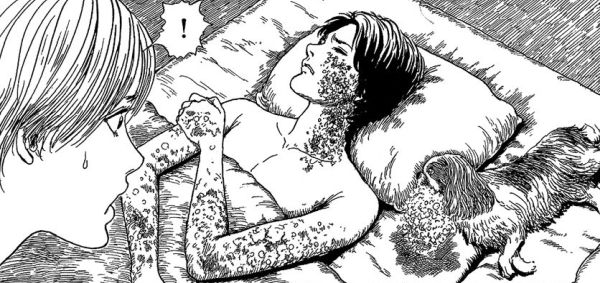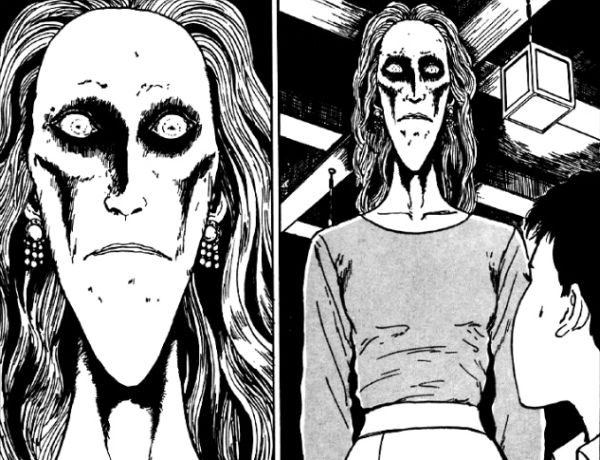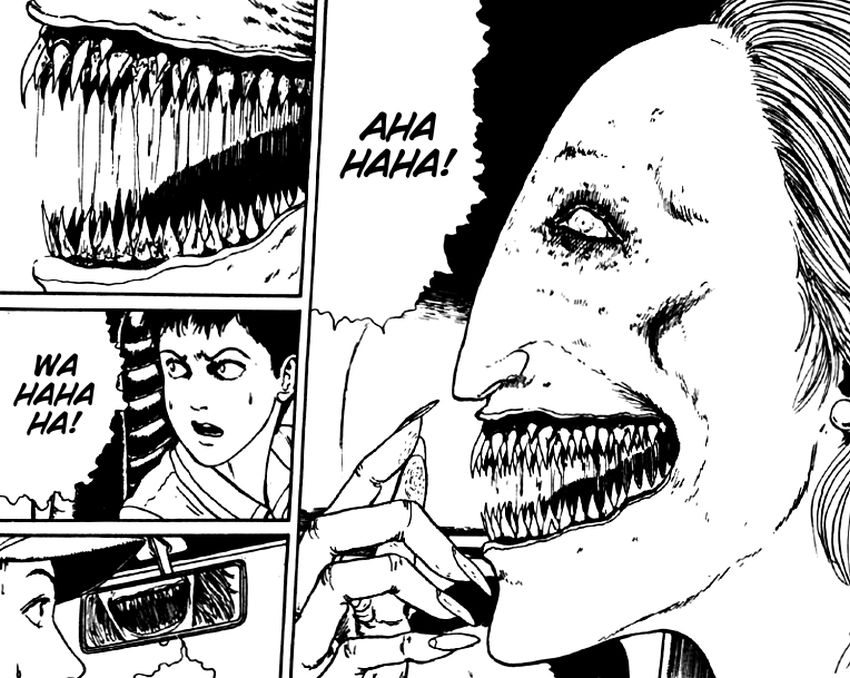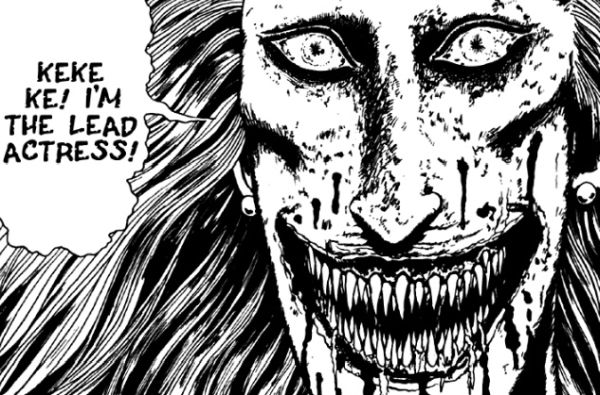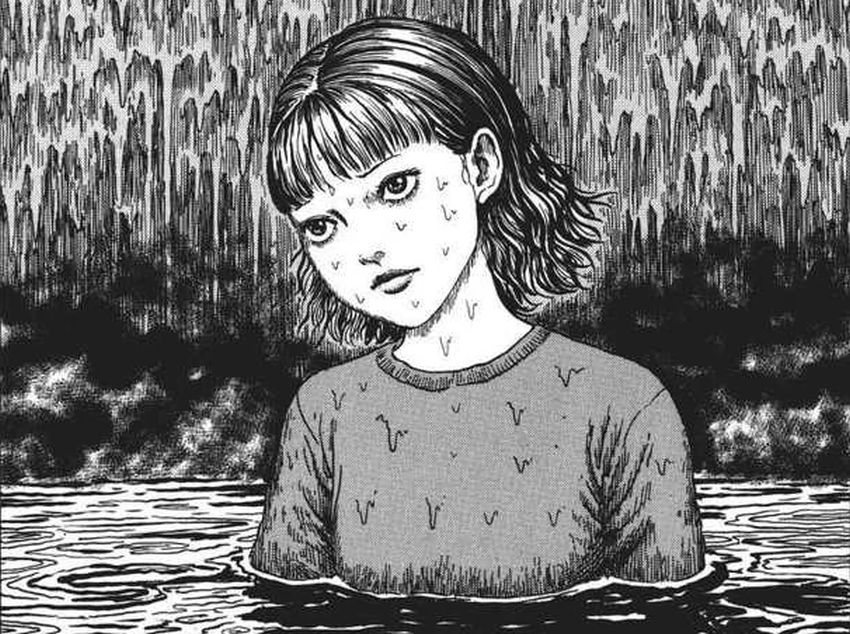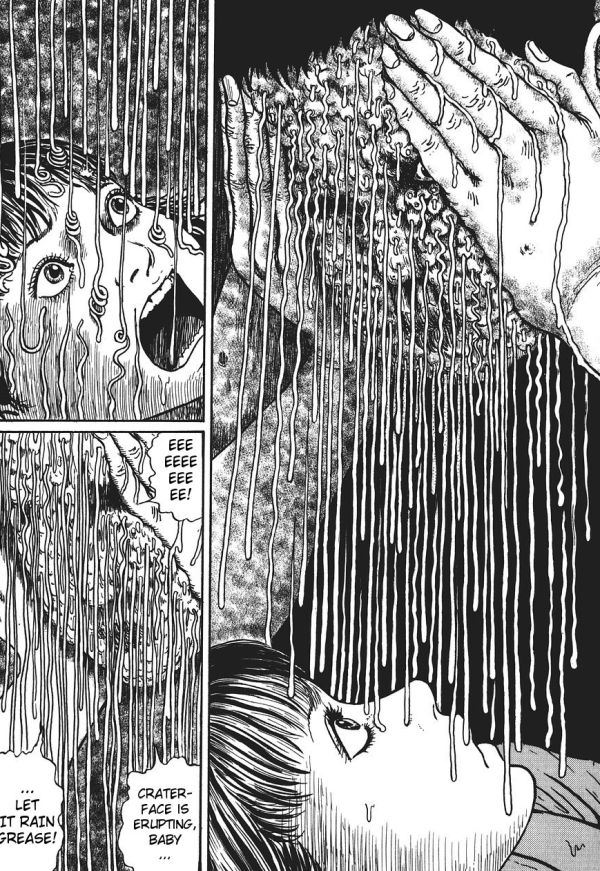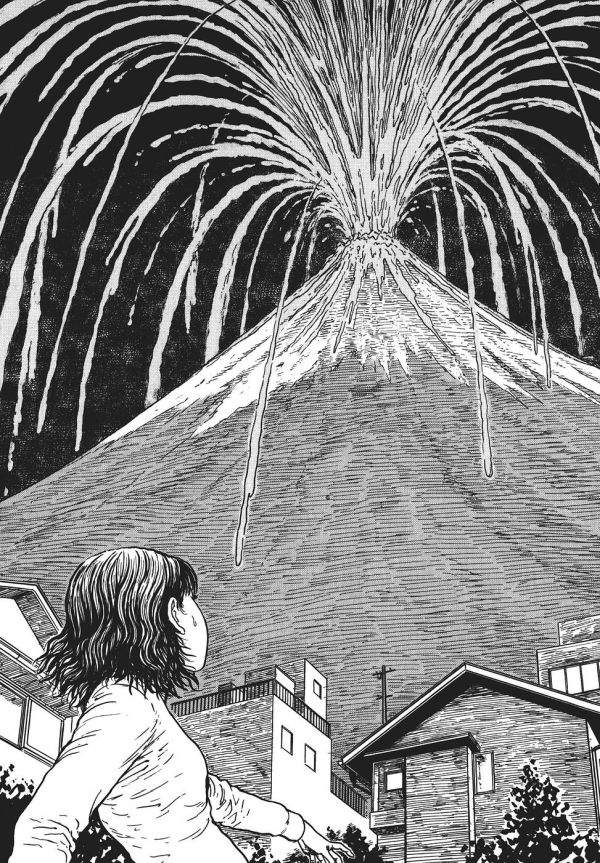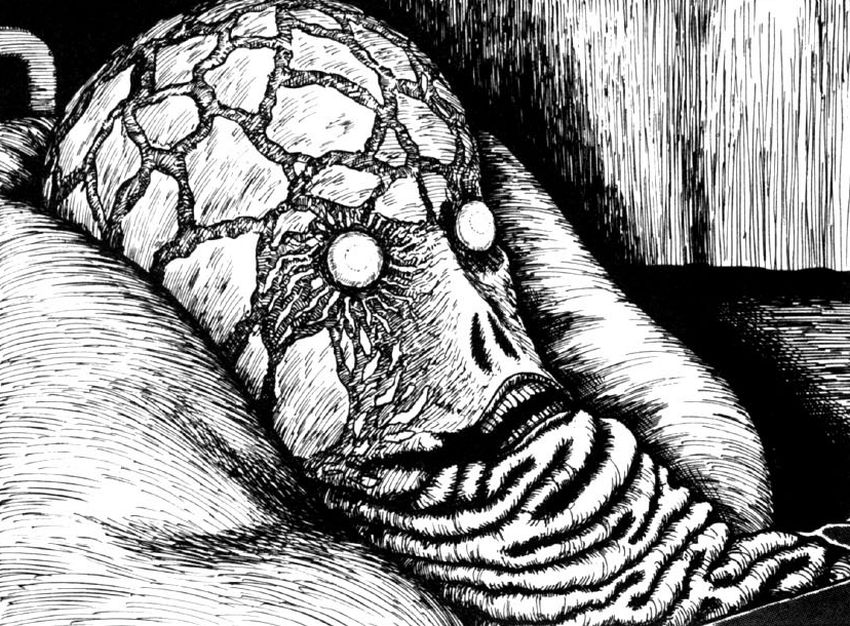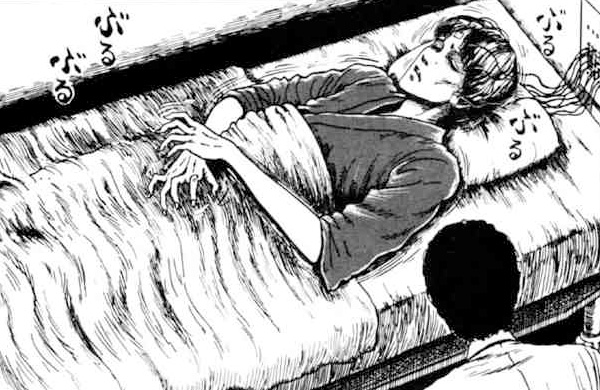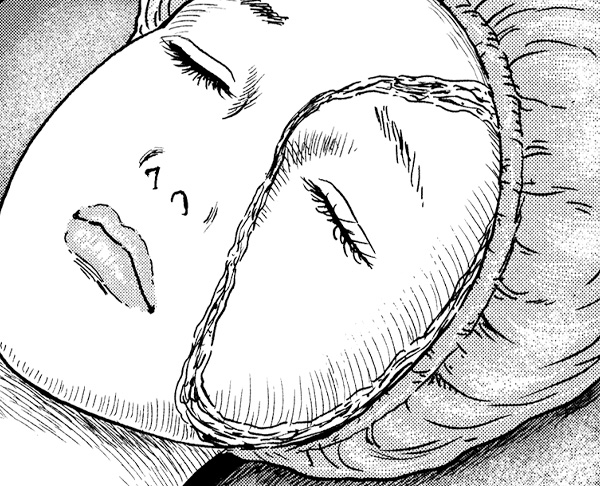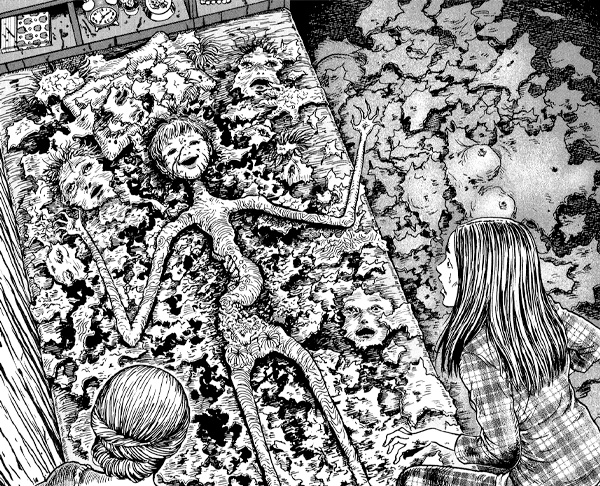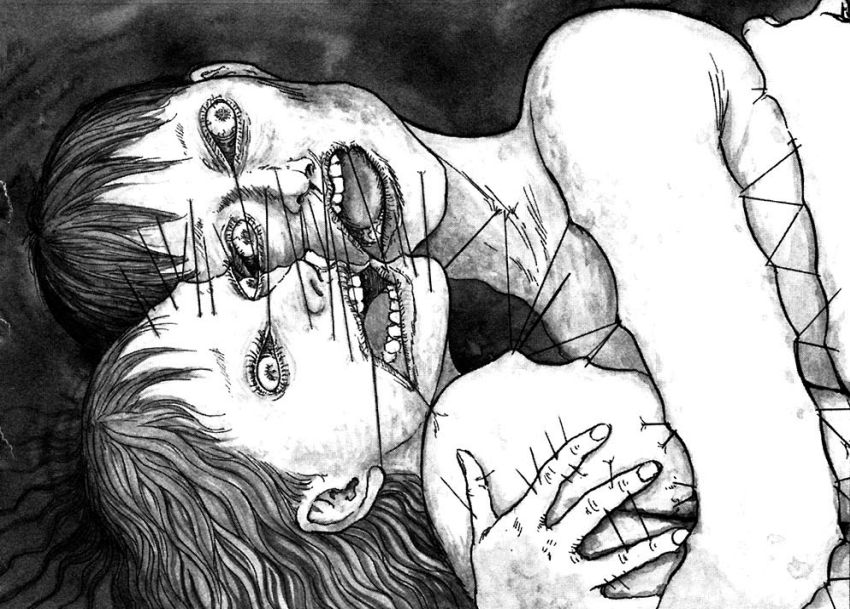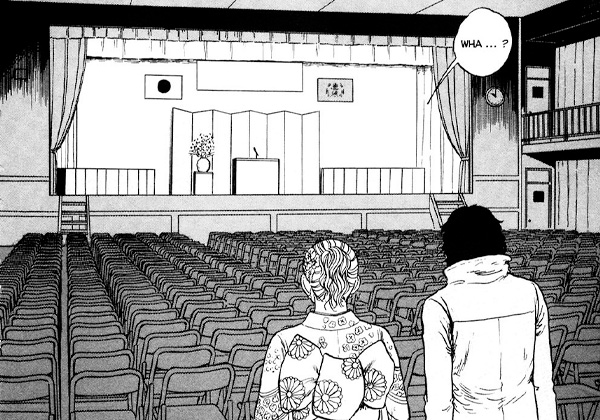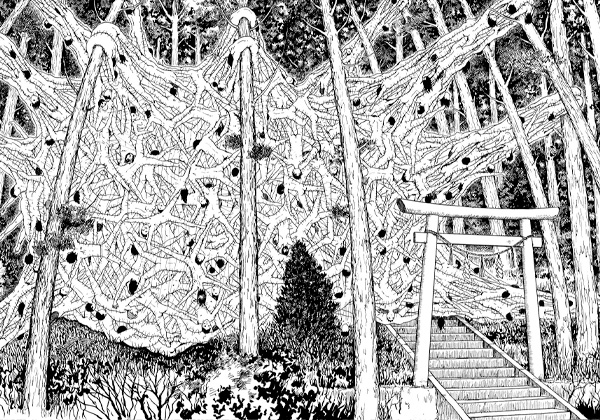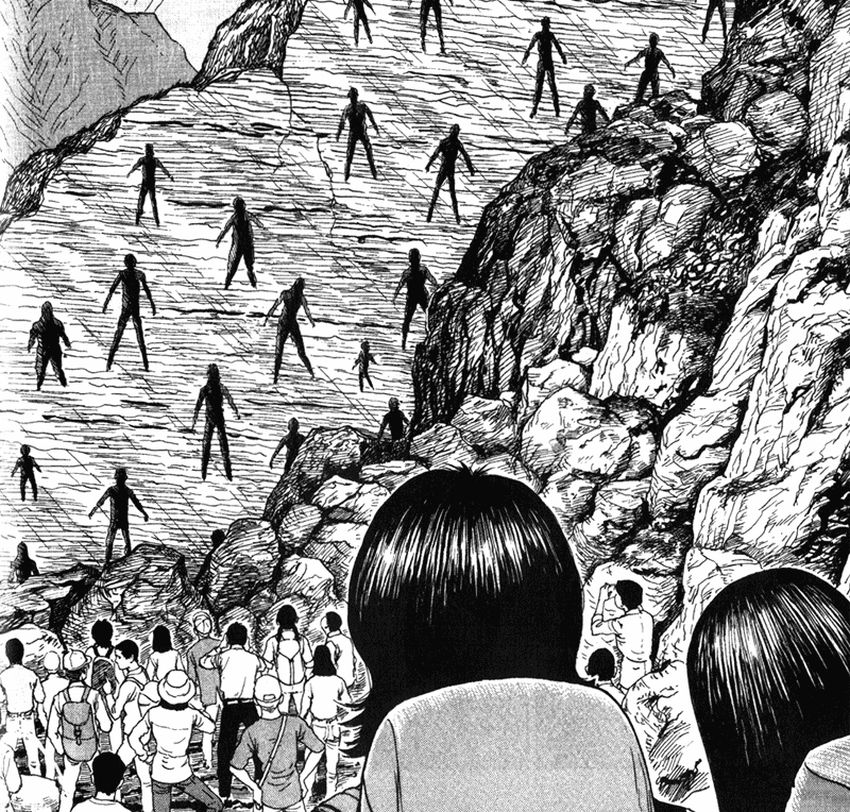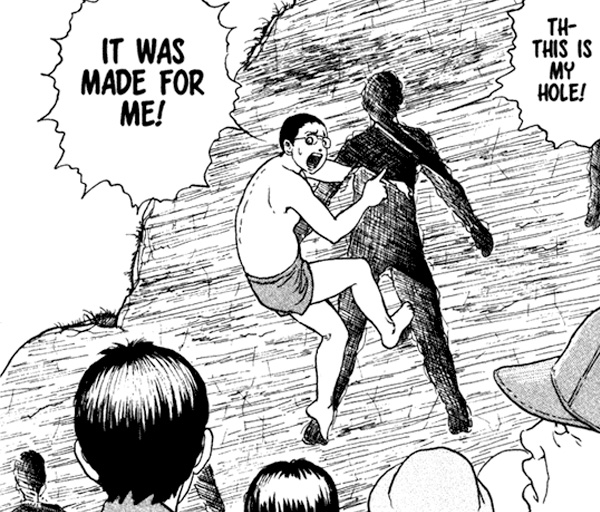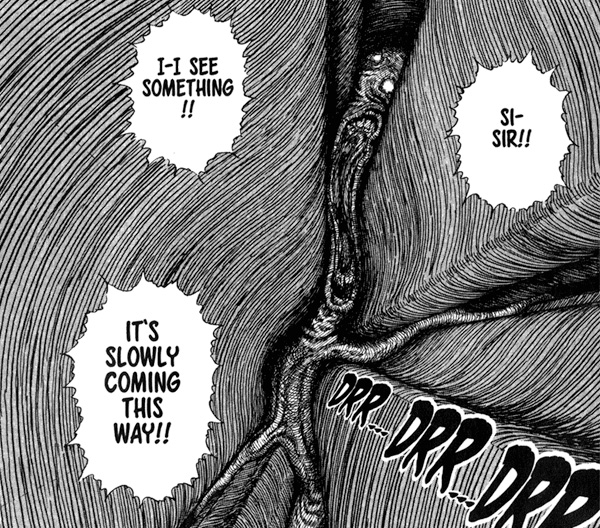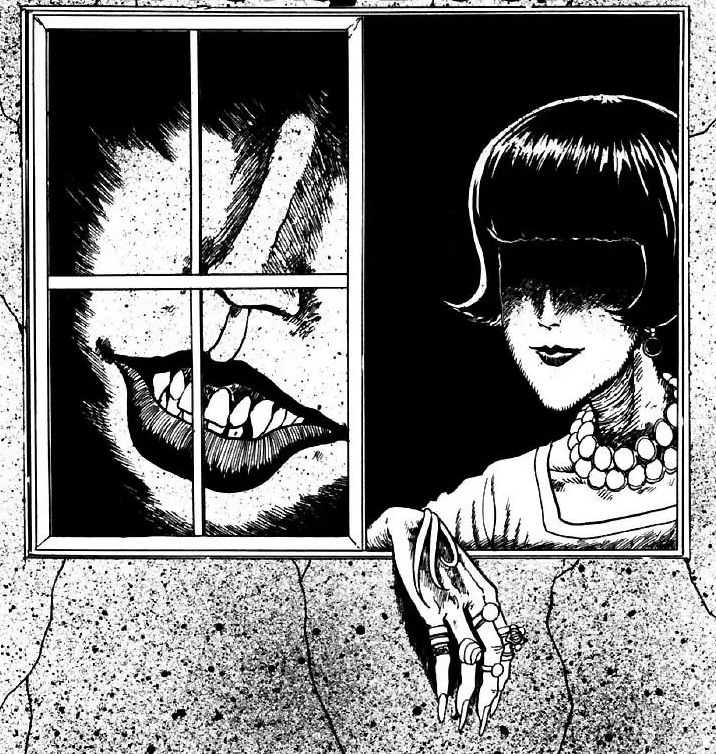
The Window Next Door is one of Junji Ito’s shortest works. It comprises only 16 pages and comes with an incredibly simple premise. Yet it remains one of his most memorable.
Thanks to one thing, and one thing alone: the neighbor’s face.
Plot Summary – A Grotesque Neighbor
Hiroshi and his family move into a new home. Right next to it stands an old, run-down building with just a single window. Incidentally, said window directly faces the one in Hiroshi’s bedroom.
The family soon learns that the house belongs to a reclusive woman who barely leaves her home. Yet at night, Hiroshi begins hearing strange whispers. When he approaches the window, he finally catches a glimpse of the strange woman, and her appearance is nothing short of terrifying, monstrous even.
As the nights go on, she tries to get closer. First by calling out to Hiroshi, then by using a pole to cross the distance between the windows. When neither of those works, the story turns surreal. The wall itself stretches over toward Hiroshi, who ends the story by lamenting that the window next door is coming for him.
What Makes The Window Next Door So Good?
On paper, it’s an incredibly minimal story. A family moves into a new house, a creepy neighbor is introduced, and we bear witness to her increasingly strange behavior. Many would call the story forgettable or anticlimactic, if not for that one image.
It’s the neighbor’s face that makes the story so memorable. It’s a masterclass in surreal body horror. Her eyes are narrow, her lips dry and barely there. When she notices Hiroshi, she opens a drooling mouth filled with protruding, jagged, and mismatched teeth. Even her hands, framing the face, look unnatural, feeling overly large and bony. This woman is not just unsettling. She’s an abomination.
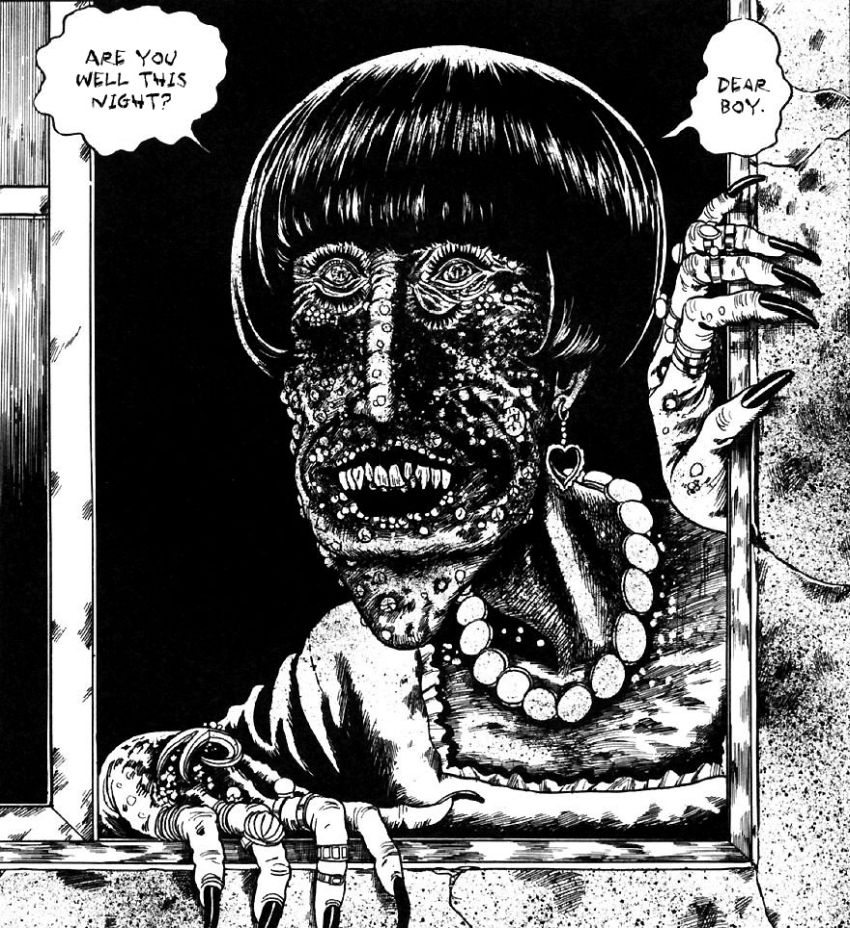
Even more interesting, the horror just works. We never learn who the woman is, and why she looks or acts the way she does. No, all we get is her face, and this is more than enough to make the story stick.
Paired with the short, escalating sequence of events, the tension never drags. Every night, the woman comes closer. Thus, the story does exactly what it needs to do.
Deeper Themes – Stalking, Grooming and Vulnerability
On a deeper level, The Window Next Door, is about more than just a creepy face.
It’s a story about stalking, of someone trying to invade your private life, and forcing a connection. The woman isn’t simply watching Hiroshi, she’s trying to get to him, and night after night, she comes closer.
And where does it all happen? In Hiroshi’s bedroom, the one place he should feel safe. When does she do it? During the night, when he’s sleeping and at his most vulnerable. This is a hallmark of violated privacy, but also grooming, given that our protagonist is still a teenager.
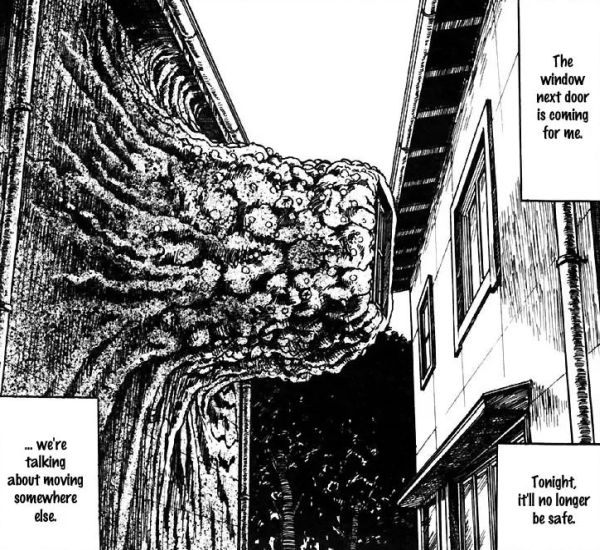
The story also touches on another of Ito’s familiar themes: dismissive parents. Hiroshi tries to explain what’s happening, but his parents brush it off as nothing but a dream, and after a short change of rooms, leave him to face the growing horror all by himself. This is a theme that echoes throughout horror media involving adolescent protagonists: the adult world cannot protect you.
Final Verdict – Short, Simple, and Horrifying
The Window Next Door is proof that you don’t need a long, sprawling backstory to terrify readers. Sometimes a single panel, a single face, is more than enough.
That face went on to become one of Ito’s most iconic creations, and it even inspired one of my own stories: The Disappearing Alley.
The Window Next Door might be short; it might be simple, but it’s unforgettable.
Curious about more of Ito’s horror? Check out my review of My Dear Ancestors.
You can find The Window Next Door in Junji Ito’s collection Tombs, available on Amazon.



